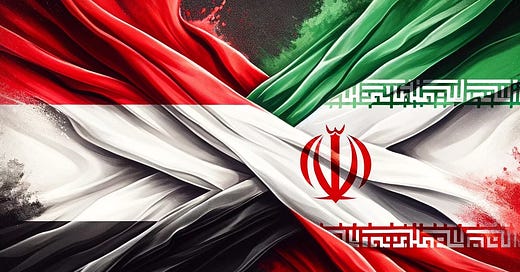Unraveling Iran's Shadow Play in Yemen's Maritime Chessboard
According to multiple regional and Iranian sources, commanders from Iran's Islamic Revolutionary Guards Corps (IRGC) and Lebanon's Hezbollah are actively involved in Yemen, lending their expertise to the Houthi militia in attacks on Red Sea shipping. This development is akin to adding fuel to a smoldering fire, as it follows an uptick in Iran's support to the Houthis, including the transfer of advanced weaponry, in the wake of conflict in Gaza sparked by Hamas's attacks on Israel.
The IRGC's role extends beyond mere participation; they are providing expertise, intelligence, and operational guidance, honing in on vessels bound for Israel as prime targets. Imagine a chess grandmaster directing pawns across a board, each move calculated with strategic precision.
This situation has ratcheted up tensions in a region already simmering with conflict, impacting global shipping through the strategic Bab al-Mandab strait. It's a chokepoint as crucial to maritime traffic as a busy intersection is to city commuters. In response, military forces from the U.S. and Britain have been prompted into action. Yet, despite these chess-like moves on the geopolitical board, Iran's Foreign Ministry and the IRGC have swept aside allegations of their involvement in the Red Sea skirmishes, a stance echoed by Houthi spokesperson Mohammed Abdulsalam.
However, the presence of IRGC and Hezbollah personnel in Yemen isn't just whispers and shadows. Several sources have illuminated their role in training, advising, and overseeing missile attacks. This complex scenario reflects Iran's broader regional strategy, which is akin to a spider weaving an intricate web, leveraging its Shiite militia network to project influence and disrupt maritime security. The Houthis, born out of opposition to Saudi influence in Yemen, have found a kindred spirit in Iran's anti-Western stance. Their actions in the Red Sea are not mere ripples but waves in this larger geopolitical contest.
This alignment is further complicated by the involvement of Hezbollah and the impact of the conflict on Lebanon, Syria, Iraq, and the broader Middle East. It's a domino effect, where the toppling of one leads to a cascade in others. Iran's support to the Houthis, characterized by the transfer of military technology and strategic advice, is a chapter in its longstanding policy to bolster allies within its "Axis of Resistance." While Tehran consistently denies such tactics, various sources have shone a light on this strategy, acknowledging it as a significant factor in the ongoing regional instability and maritime disruptions.
It's important to note, however, that these maneuvers on the geopolitical chessboard are not without humanitarian cost. The conflict in Yemen has led to one of the world's worst humanitarian crises, with millions facing famine and displacement – a tragic human story behind the veil of military and political strategies.
Looking forward, the situation remains as unpredictable as a stormy sea. The involvement of major powers like the U.S. and Britain, the strategic importance of maritime routes, and the deep-seated regional rivalries suggest that the waters of this conflict are likely to remain turbulent. As observers and analysts, we continue to watch, hoping for a resolution that brings not just stability to the region, but also relief to the people caught in the midst of this geopolitical storm.




